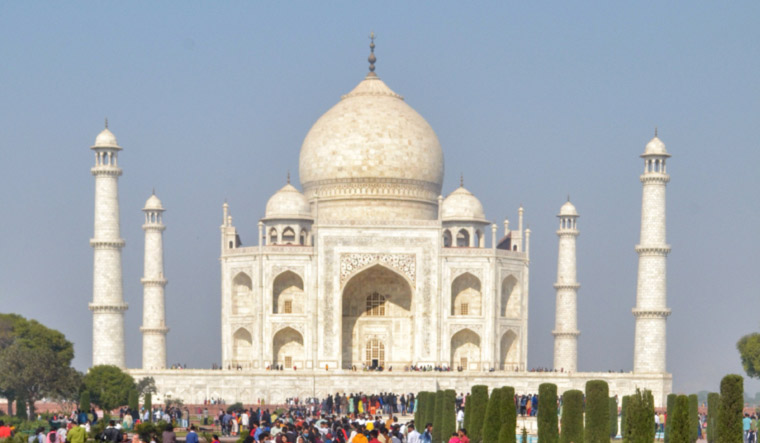Assess Glass Industry Impact On Taj Mahal: SC To NEERI
Apr 22, 2025 | Pratirodh Bureau
The top court had previously deplored the Taj Trapezium Zone (TTZ) authority on environment protection in and around the Taj Mahal, asking it whether the preservation of the iconic monument was a “tamasha” (drama) or a “joke"
On April 22, the Supreme Court of India took a significant step towards protecting the Taj Mahal by directing the National Environmental Engineering Research Institute (NEERI) to assess the impact of nearby glass industries on the iconic monument located in Uttar Pradesh. This directive came from a bench comprising Justices Abhay S. Oka and Ujjal Bhuyan, who emphasized the need for a thorough evaluation of pollution levels caused by these industries.
The court instructed NEERI to file an affidavit detailing the timeline for completing the assessment. The justices expressed their concern over the potential environmental damage inflicted by the glass manufacturing units, stating, “We want to know the extent of pollution caused by these industries. If we find that these industries are causing pollution, we won’t hesitate to order shifting of these units.” This statement underscores the court’s commitment to ensuring that the Taj Mahal, a UNESCO World Heritage Site, is preserved for future generations.
In addition to NEERI’s assessment, the Supreme Court mandated that all relevant government agencies, including the Uttar Pradesh Pollution Control Board, assist in this crucial exercise. The bench further directed the pollution control board to form a team tasked with visiting the industries identified in the affidavit submitted by the state. This team will examine the pollution levels emanating from these glass industries, which have raised concerns about their impact on the Taj Mahal’s pristine condition.
The court’s directive included a specific timeline for the pollution control board to complete its study of five selected industries. Following this assessment, the board is required to submit an interim report, which will enable the Supreme Court to issue appropriate directions based on the findings. The justices highlighted the urgency of the situation, indicating that immediate action may be necessary if the assessment reveals significant pollution levels.
The Supreme Court has previously expressed its frustration with the Taj Trapezium Zone (TTZ) authority, which is responsible for environmental protection in the vicinity of the Taj Mahal. The justices questioned whether the preservation efforts were being treated as a “tamasha” (drama) or a “joke,” reflecting their dissatisfaction with the current state of environmental management in the area. The TTZ encompasses approximately 10,400 square kilometers, covering districts such as Agra, Firozabad, Mathura, Hathras, and Etah in Uttar Pradesh, as well as Bharatpur district in Rajasthan.
The apex court has been actively monitoring developments in the TTZ to ensure the protection of the Taj Mahal, which was commissioned by Mughal emperor Shah Jahan in memory of his beloved wife, Mumtaz Mahal. The monument, renowned for its stunning ivory-white marble architecture, attracts millions of visitors each year and is a symbol of India’s rich cultural heritage.
As the Supreme Court continues to oversee the situation, it remains committed to safeguarding the Taj Mahal from environmental threats. The court’s recent directives signal a proactive approach to addressing pollution concerns and ensuring that the monument’s beauty and historical significance are preserved. The collaboration between NEERI, the pollution control board, and other government agencies will be crucial in determining the extent of pollution caused by the glass industries and in formulating effective measures to mitigate any adverse effects.
The Supreme Court’s intervention marks a pivotal moment in the ongoing efforts to protect the Taj Mahal from industrial pollution. The court’s insistence on a comprehensive assessment and its readiness to take decisive action if necessary reflect a strong commitment to environmental conservation and heritage preservation.
